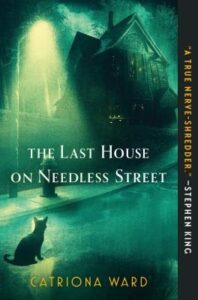
“The Last House on Needless Street” has left me in a bit of a quandary. On one hand, I value a book that keeps me pondering long after I’ve turned the last page, and this novel certainly did that. The story is polarizing, with readers firmly divided—some love it, others not so much. Caution: Spoilers ahead. One aspect I grappled with is the use of mental illness as a pivotal plot twist. While the author may have aimed to cast this in a somewhat positive light, the portrayal of mental illness as the “big reveal” didn’t sit well with me. Moreover, the narrative led me to believe that a young girl was enduring torture throughout much of the book—a plotline that unfolds to reveal a backstory of trauma leading to Dissociative Identity Disorder in the protagonist, Ted. This twist, meant to be a dramatic revelation, instead left me uneasy, questioning the necessity of framing the story this way. An intriguing theory I read in a discussion suggests that the other characters might not be separate individuals but rather different facets of Ted himself. While I’m skeptical, it had me consider the author’s broader intentions. Ultimately, “The Last House on Needless Street” is a book that challenges and provokes. I’m still unsure if I loved it, but it definitely sparked deep thought, which is a nod to its complex and controversial narrative.